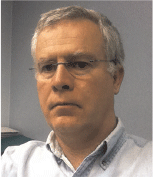Well integrity and the correlation between borehole breakouts, drilling-induced tensile fractures and cement-bond log response
R. Marsh A , A. Khaksar A , O. Gaede A , A. White A , C. Wilson B and S. Alexander CA Baker Hughes.
B Santos.
C GDF Suez.
The APPEA Journal 52(2) 696-696 https://doi.org/10.1071/AJ11110
Published: 2012
Abstract
Traditionally, image logs are acquired for sedimentary and structural analysis and more recently geo-mechanical analysis. Caliper logs are usually acquired for cement volume information and borehole condition information with pad tools. In general, cement bond logs have been the only logs used for the assessment of cement bond quality and thereby well integrity at the end of the well construction phase.
Cement bond logs occasionally produce puzzling results—the cement job parameters indicate a successful cement job, yet the cement bond log indicates otherwise. In some circumstances, the presence of a micro-annulus can cause the appearance of a bad bond. In others, the causes of such cement bond log responses are less obvious.
Wellbore breakouts and drilling-induced tensile fractures can cause drilling problems such as increased losses, washouts and cave-ins; however, their association with cement bond quality is not always appreciated. This dataset consists of LWD StarTrak and LithoTrak caliper data and EWL Wellbore Geometry Instrument (WGI) data and Segmented Bond Tool (SBT) data.
The data shows extensive zones of borehole breakouts as well as tensile fractures, some of which exist in areas without breakouts. The SBT pad data shows large areas of poor bond between relatively thin-cemented sections. The VDL data shows formation arrivals that became more pronounced with depth. When the data are compared, the zones that showed tensile fractures coincided with zones showing poor bond. The zones showing no tensile fractures or breakouts were also the zones showing good cement bond.

Roger Marsh is applications engineering and geoscience manager for Baker Atlas in Perth, Western Australia. He has more than 15 years of field experience in both open and cased hole services. Since 1995, he has overseen field trials for open-hole and cased-hole services including the RPM prototype. He has held various international technical and management assignments, most recently as Asia Pacific technical manager. |

Abbas Khaksar is a global geomechanics advisor and subject matter expert in solids production prediction and management at Baker Hughes (GMI Geomechanics Services) in Perth, Western Australia. He holds a BSc (mining engineering) from Tehran University (1989), an MSc (petroleum geology and geophysics) (1994), and a PhD (rock physics) (1998) from the University of Adelaide. He has worked in industry and academia in petroleum rock mechanics, petrophysics, and resources exploration and development. From 1989 to 92, he worked for Iran geological survey as a field engineer; in 1999–2000, he was a post-doctoral researcher at the University of Adelaide studying pore-pressure prediction and CO2 sequestration then for Geomechanics International (GMI), Perth. From 2000 to 05, he was a petrophysicist, geomechanics specialist, and later manager-consulting services in Asia-Pacific. He joined Helix RDS in 2005 as a senior then became a principal geomechanics specialist and worked in Perth and London offices until 2009 when Baker Hughes acquired Helix RDS. In 2010–11, he was Asia Pacific geomechanics team leader for Baker Hughes (reservoir development services [RDS]). Member: SPE, FesAus. |

Oliver Gaede is a geomechanics specialist for Baker Hughes (GMI Geomechanics Services), Perth. He joined Baker Hughes after finishing his PhD: ‘Anisotropic damage evolution and borehole stability in chemical reactive rock formations’ at UWA. Prior to his PhD, he completed a diploma (geophysics) at Freie Universität Berlin, Germany where he investigated stress sensitivity of reservoir sandstones. His areas of expertise are in experimental rock physics, finite element modelling, and geomechanics. Member: AGU, the German Geophysical Society (DGG). |

Adrian White received his PhD in structural and petroleum geology from the University of Durham in 2002. Between 2002 and 04 he was a Postdoctoral Fellow at the Australian School of Petroleum, University of Adelaide. Since joining GMI in January 2005, Adrian has been involved in training, consulting, and project management in the Asia-Pacific region. Adrian has experience in constructing geomechanical models and pore pressure prediction from wireline log and seismic data. He has successfully implemented these processes in field and reservoir development and characterisation, fracture and fault stability, wellbore stability, drilling strategies and reservoir completion. Adrian is presently the team leader of geomechanics for the Baker Hughes-GMI Geomechanics Services in the Asia-Pacific region. |

Chris is a senior drilling engineer within the Santos offshore drilling and completions team. He has more than 20 years of drilling and geoscience experience working in various roles from wellsite and operations geologist to drilling engineer, offshore drilling supervisor and drilling superintendent. He has a BSc (geology) and an MEngSc (petroleum engineering). |

Scott Alexander is a senior geologist for GDF Suez where he is part of the subsurface team for the Bonaparte LNG project. He has more than 15 years of experience in various exploration and production geology roles in Australia, Oman, and China. He holds a BSc (hons) from Victoria University, New Zealand. Member: SPE, AAPG. |
References
Moos, D., and Zoback, M.D. (1990). Utilization of observations of well bore failure to constrain the orientation and magnitude of crustal stresses: application to continental, Deep Sea Drilling Project and ocean drilling program boreholes. Journal of Geophysical Research 95, 305–325.Plumb, R., and Hickman, S. (1985). Stress-induced borehole elongation: a comparison between the four-arm dipmeter and the borehole televiewer in the auburn geothermal well. Journal of Geophysical Research 90, 513–521.


